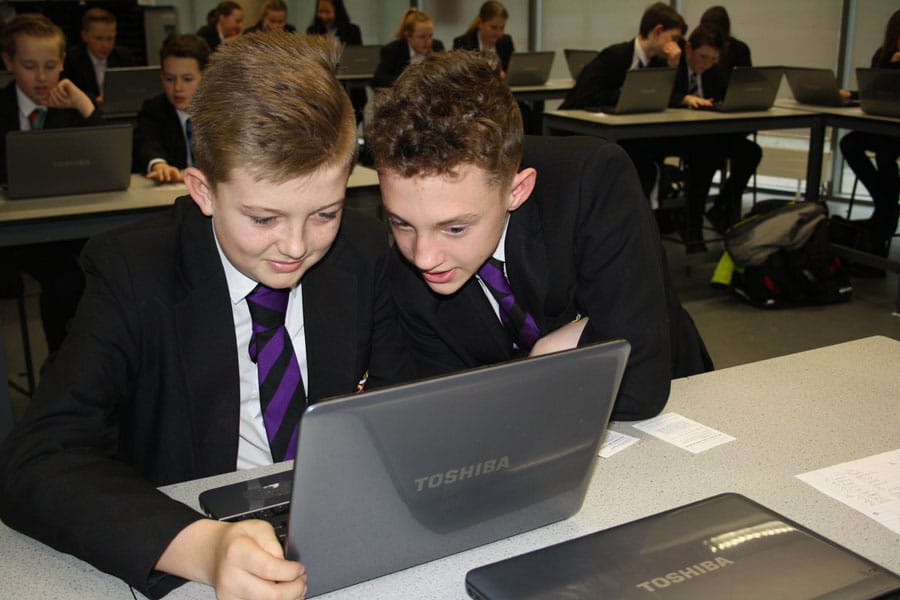I’m a scientist, Get Me Out of Here
Outreach is an integral part of research, and many scientists see the intrinsic value of communicating with the younger generation, both in terms of disseminating their own research but also as a way of ensuring a strong future for STEM research and careers. Shane McCracken, science enthusiast and the creator of I’m a Scientist, Get Me Out of Here (IAS) discovered that if a school is 30 minutes’ drive away or more from a research-based university, it’s half as likely to get visited by a scientist as a school within 15 minutes’ drive. That contributes to a wider lack of engagement in young people who are lacking in ‘science capital’, the concept that a broad exposure to science at home, in school and through the media contributes to a feeling in young people that science is for ‘people like me’.
We talked to Shane about the experience of IAS for children and for scientists, and the vital role of science capital, both for fledgling scientists themselves and for the broader future of scientific research.

Shane, could you tell us more about how IAS started?
It started as a development from a previous project, I’m a Councillor, Get Me Out of Here, in which we set up a website where kids had the chance to vote and tell local councillors what they thought of them. We wanted to reverse the usual power structures and put it into a cultural and media context where the young people were going to be more comfortable… and it just worked. Off we went. We had a quarter of UK councils taking part.
We wanted to reverse the usual power structures and put it into a cultural and media context where the young people were going to be more comfortable… and it just worked.
And how did it develop into IAS?
One of my employees, Sophia Collins, had just done a Master’s in Science Communication. The National Curriculum had changed to include elements of how science works and teachers were struggling to find decent resources. Sophia suggested what we were doing would work brilliantly with science and scientists, and so we applied for funding from the Wellcome Trust to pilot this and they said yes. They’ve been saying yes ever since.

to collaborate with an artist to enhance his public engagement talks.
The ASPIRES project, a ten-year study into the way young people perceive STEM subjects, has informed your perception of ‘science capital’ – can you tell us more about that?
ASPIRES tells us the older the kids get, and the less they talk about science at home, the less likely they are to feel science is for them… and once a child has decided ‘science isn’t for me’, getting them back on board is very difficult.
We’ve been working with ASPIRES researcher Dr Jen DeWitt; she’s been running focus groups with students, interviewing teachers and analysing onsite activity. Traditionally, teachers have tried to make science relevant to the real world. They’ll teach about, for example, how hot, expanding gases coming out of a rocket power it into space. But that’s not personally relevant to the lives of most kids, even if they do find it interesting. Rockets are not that relevant to their daily lives. To address this, we try to bring a focus on science capital and use that to inform our approach. We emphasise making the experience personally relevant and make sure our event is totally
student-led.
How do children get involved?
Schools sign up on the website. We select them based firstly on the distance they are from their nearest research-intensive university and secondly, on the proportion of free school meals; it’s an economic deprivation-based target.

What’s the IAS experience like for kids?
First of all, teachers might show the kids the scientists’ profiles and get the kids thinking about why they might vote for a scientist. Then the lesson starts, the kids log in, the scientists come online, the chatroom opens, and the kids ask questions. The variety of questions is just enormous. Teachers say kids feel it’s a personal conversation they’re having and they’re able to get hundreds of kids having these one-to-one conversations with scientists. We run an evening chat so that they can come on with their parents. I suspect we’re still getting more middle-class parents, but it’s a start and it will snowball. Then the kids and vote for the scientist they want to win.

How do you select the scientists who take part?
Scientists sign up to show interest, and we’ll then allocate them to zones based on two things. Firstly, we ask for a one-sentence description of their work, and we get students and teachers to rate that based on how interested they’d be in having them in. Secondly, we ensure every zone has three women, three men and that there’s a decent ethnic mix, a good geographical spread, a spread of ages and of disciplines because that way, we can give kids a greater diversity of scientists to connect with. We’re helping kids think science could be for them, thinking that they could be part of that tribe of scientists, thinking that they aren’t weird lab rats being antisocial and not being able to talk to people. They are seeing them as normal, cool, pizza-consuming people. We have a waiting list of scientists wanting to be involved!
How does the IAS format improve inclusivity?
The scientists see an extra element that the students don’t see: on the live chat there is a number next to each student indicating the number of times that student has had an answer from a scientist in that chat.
We’re helping kids think science could be for them, thinking that they could be part of that tribe of scientists.
The tendency is that if you’re a confident, articulate kid, you ask a bunch of interesting questions, but the shyer kids are less engaged… if you answer their questions though, they become engaged. They feel, “Someone’s listening to me. They’re interested in my opinions. Actually, this science thing is okay.” A teacher was explaining how taking part in IAS changed his class dynamics; in the live chats, the less confident kids were asking these fascinating questions and the confident kids were going around saying, “Who asked that? Who was that? Wow.”
Can you tell us about some of your alumni?
Dr Ceri Brenner, a physicist who works in the central laser facility at Rutherford Appleton Laboratory, was taking part in IAS during her PhD. Over the two weeks she was asked countless times, “What do you do?” and she honed the description down tighter and tighter, and five years later, she still uses that description.

Dr Suzi Gage is a psychologist working on drugs. With her winnings, she started this wonderful podcast called Say Why to Drugs with poet and musician Scroobius Pip. The tagline for it goes, ‘This is not pro-drugs, this is not anti-drugs, this is pro-truth’. And Suzi will tell you, it all started with IAS.
Dr Julian Rayner is a more senior scientist, in age and in status. He won IAS. He works on malaria up at the Wellcome Genome Campus at Hinxton. His winner’s certificate is on his wall next to his Nature front cover, and he’ll tell you, if you call him, that taking part in IAS was a life-changing experience.
In terms of UK funding, do people see the importance of building that science capital?
More and more funders are aware of science capital research and its importance, and their funding guidelines state it should be addressed. How that translates into the actual funding of larger projects is less clear… but I think the direction is good; funders are recognising that in the past we’ve been preaching to the converted, reaching the kids with already high science capital. They recognise the social justice in reaching the kids who haven’t had the same chances.
If you would like to find out more about I’m a Scientist… Get Me Out of Here! Please visit their website at www.imascientist.org.uk.